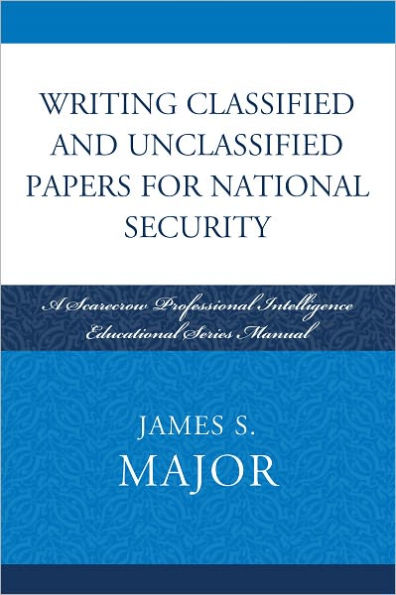Table of Contents
Editor's Foreword Jan Goldman xi
Introduction: The Need for Standards James Major xiii
Part 1 Writing and Thinking as an Intelligence Analyst
1 The Basic Tools of Writing 3
Clarity 4
Conciseness 5
Correctness 7
Appropriateness 14
Completeness 15
Coherence 15
Summing Up the Basics 16
2 Using the Basic Tools 19
Pacing Yourself 19
Titles, Headings, and Subheadings: Previews of Coming Attractions 20
The Paper Layout 24
Some Hints for the Content 26
Concluding Section: All Good Things Must End 27
Appendixes and Annexes: Extra 27
Additional Front Matter Options 29
How to Handle Graphic Material 29
Beyond the Form and Format 31
3 What an Intelligence Analyst Does 33
Training New Analysts 33
The First Step 34
The Differences between Academic and Intelligence Writing 36
A Framework for Analysis 38
Getting to the Argument 44
4 Argument in Intelligence Writing 45
Characterics of Arguments 45
Focus on a Thesis Statement and Its Support 47
Take Prewriting Seriously 48
Developing Support for Your Thesis Statement 51
Part 2 The Usage Manual
5 Usage and Abusage 69
Wasted Words 69
Numbers 69
Plurals and Singulars 78
Puns 80
6 Punctuation 81
Clarification and Separation 81
Ampersand (&) 82
Apostrophes and Possessives 82
Brackets 86
Bullets 87
Colon 88
Comma 89
Dashes 94
Ellipsis Periods 95
Hyphen 97
Italics or Underlining 100
Parentheses 103
Period 103
Question Mark 104
Quotation Marks 105
Semicolon 106
Virgule 107
7 Capitalization 109
Two Principles 109
Coined Names 109
Derivatives of Proper Names 110
Common Nouns in Proper Names 110
Titles Preceding a Name 110
TitlesFollowing or Replacing a Name 111
Governmental Bodies 111
Political Parties and Philosophies 111
Diplomatic Units and Corps 112
Historic Events 112
Titles of Publications 112
Military-Associated Terms 113
For Emphasis 114
Military Designators 114
8 Abbreviations 117
General Policy 117
Abbreviations to Avoid 118
Foreign Terms 120
Incomplete or Possessive References 120
Plural Forms 120
Military Grades with Abbreviations 120
State, Province, Territory, and District Names 122
Abbreviations Often Found in Research 123
Abbreviations Often Found in Intelligence Publications 125
9 Compounding and Other Troublemakers 137
Demon Words and Phrases 137
10 A Usage Glossary for Intelligence Writers 145
Part 3 Citation Style and Handling Classified Material
11 Citing Your Sources 173
Who? 173
Why? 173
How? 174
General Format 175
Spacing and Fonts 176
Sample Note and Bibliographic Forms 176
Abbreviations 178
Alphabetization 179
Anonymous Authors or Unattributed Work 179
Capitalization and Punctuation in Titles 180
Cited Hereafter as ... 180
Dates of Publication 181
Epigraphs 181
Explanatory Notes 182
Foreign-Language Publications 184
Indirect (Secondary) References 185
Lecture, Cited in a Book 186
Members of Congress 187
Military Rank 187
Missing Data 189
Multiple Sources in One Note 189
Names, Referenced in the Text 191
Periodicals 191
Publishers 192
Punctuation 194
Punctuation in Quoted Material 195
Secondary (Short) Citations 197
Subsequent Works by the Same Author, Agency, Organization 199
Titles of Individuals 199
Translations from a Foreign Language 200
Volume Numbers in Notes and Bibliography 200
Bits and Bytes 201
12 Electronic Citations 203
General 203
Electronic Sources 204
Uniform Resource Locators (URLs) 204
The Mysterious Disappearing Website 206
Page Numbers in Electronic Citations 207
PDFs, PROQUEST, TIFFs, and Such 207
Links, Homepages, and Service Providers 208
Generic Citation Format 208
Keeping Up in the E-World 209
13 Handling Classified Material 211
Why? 211
Unclassified Excerpts from Classified Works 212
How? Similarity to Unclassified Forms 212
Proper Precautions and Markings 212
Downgrading, Declassification, and Marking 213
Note and Bibliographic Forms 213
Intelink 215
Bibliography 219
Index 223
About the Author 233



